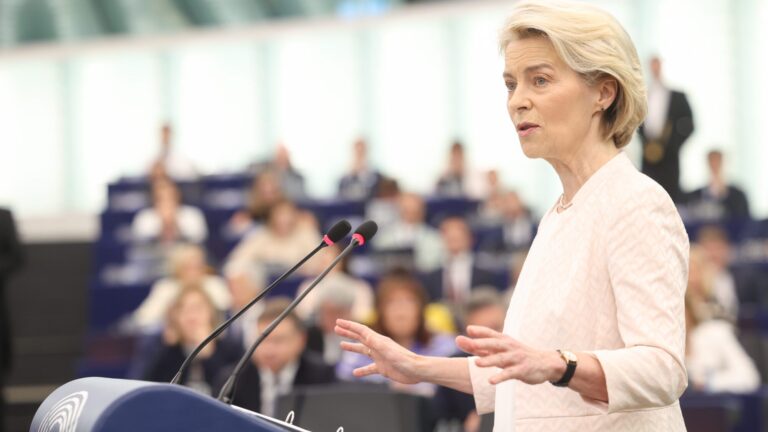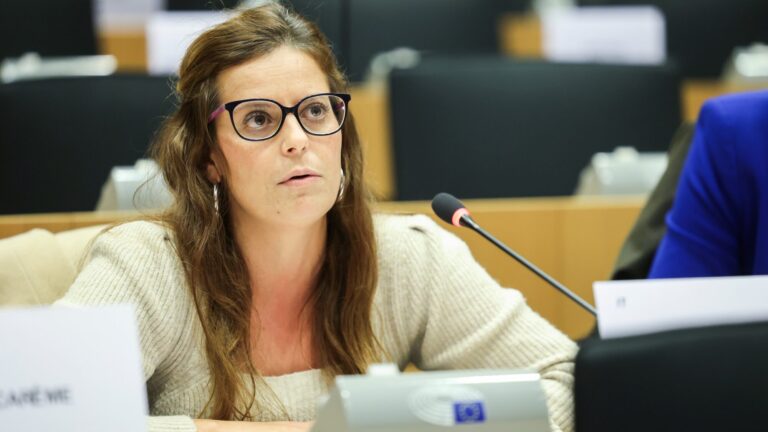Flanders’ political center has bled out. In its place, two blocs—one right-wing, composed of Vlaams Belang and N-VA, and another left-wing (Vooruit and PVDA)—have emerged.
That is at least the scenario painted by a yearly political survey, this time conducted one year before the 2024 elections.
Simply put, compared to the 2019 elections, Flanders’ electoral landscape is to undergo a radical transformation.
For the two traditional centrist parties, CD&V and Open VLD, matters look grave. According to the survey, both would suffer major losses, as they dip below 10%. Taken together, they are at risk of losing 10 percentage points of the total vote compared to 2019.
Open VLD’s case is most alarming; should it secure only 9.3% of the vote as predicted, it would mean the worst-ever result for the party—and a significant embarrassment for Alexander De Croo, Prime Minister of Belgium, whose popularity is dwindling.
Primarily, former Open VLD voters are seeking refuge in the Flemish Nationalist N-VA, the Socialist Vooruit, and, surprisingly, even the Marxist PVDA.
CD&V, at 9.2%, is barely improving upon last year’s performance. The survey shows that the party has overestimated whatever electoral gains it thought it would gain from its intervention in the controversial nitrogen debate.
Plagued by weak leadership, and ‘stuck’ with an electorate who votes more out of habit than conviction, all signs point to the CD&V being doomed to irrelevance.
On the Left, Vooruit, headed by popular chairman Conner Rousseau, has improved upon its polling numbers for the fourth year in a row, hovering just below 17%.
While that party and Groen noted 10.1% each in the 2019 election, the latter now would end up with a paltry 8%, making Vooruit the dominant force on the Left.
Groen’s continued emphasis on climate, energy, and mobility resonates less and less with the electorate, who prioritize the socio-economic themes Vooruit directs its efforts to, such as employment, health care, pensions, and social security.
Yet the PVDA is growing at a steady pace. While the Marxists secured 5.3% in 2019, now they have nearly reached the 10% threshold, outclassing Groen by a small margin.
Taken together, the three leftist parties would garner 34%, well above 2019’s 25.4%.
The all-important question looming over the 2024 elections will, however, be whether Vlaams Belang will become Flanders’ largest party, or the N-VA.
The survey designates Vlaams Belang as the clear winner with 24.6%, while N-VA—despite Chairman Bart De Wever’s enduring popularity—is underperforming with 21%, a 3.8% drop compared to its impressive results in the 2019 election.
Given these figures, at this juncture Vlaams Belang is likely to become the largest party, having seduced voters away from N-VA.
In addition, of all parties, according to the survey, Vlaams Belang voters prove the most loyal. “Vlaams Belang is certainly the most locked in for 2024. The party seems least likely to lose many more of its current voters,” say researchers Stefaan Walgrave and Jonas Lefevere.
Like few others, the party has managed to capitalize on the Flemish discontent with a decline in living standards, strong sentiment on the migration issue, as well as frustration with out-of-touch political elites.
Taken together, both Flemish-nationalist parties would garner an impressive 45% of the vote. Should they secure that amount, as predicted by the survey, they could easily form a majority within Flemish Parliament.
The state of play points to a Flemish political scene marked by stark Left-Right divisions, where centrist parties such as Open VLD, CD&V, and even Groen would end up holding the short end of the stick.
Yet, given that 11.2% of those surveyed would vote blank or remain undecided, many possibilities still remain.
In the lead-up to next year’s elections, it is expected that all political parties will fight tooth and nail so that this part of the electorate could be swayed into siding with them.





